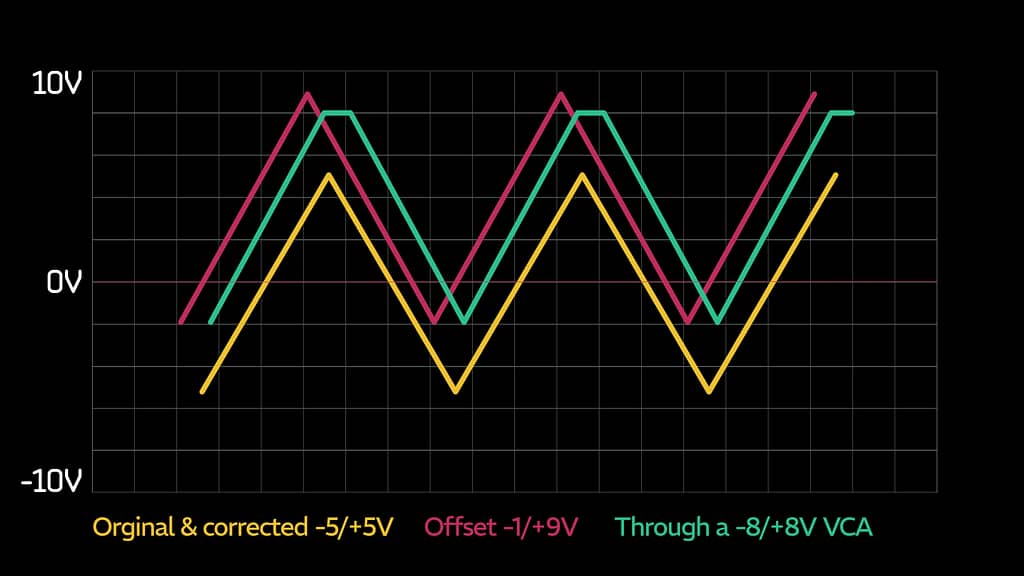In synthesizer terms, DC offset refers to a condition where the average voltage level of an audio signal is shifted away from zero volts. This shift means that the waveform is not centered on the zero line, causing it to be biased either positively or negatively. In modular synthesis and other audio processing contexts, DC offset can introduce several issues:
- Signal Clipping: If the offset pushes the waveform closer to the maximum or minimum limits of the system’s dynamic range, it can cause clipping, especially when the signal amplitude increases.
- Reduced Headroom: With the signal biased towards one extremity, the headroom for audio processing is effectively reduced, which can limit the dynamic range available for clean amplification and effect processing.
- Impact on Audio Quality: DC offset can affect the performance of certain processes like mixing and signal processing, leading to pops, clicks, or other audio artifacts during playback or recording.
- Interference with Audio Modules: Some synthesizer modules, especially those designed for AC signals (audio signals), may not handle DC offset well. This can distort the sound or affect module functions, such as VCA (Voltage Controlled Amplifier) operation or filter responses.
To manage DC offset, synthesizers and audio interfaces often include coupling capacitors or high-pass filters at their inputs and outputs to block DC components from audio signals, ensuring that only the AC part (the actual audio) is processed. Correcting DC offset is crucial for maintaining audio fidelity and ensuring that electronic music production and synthesis components function optimally.




